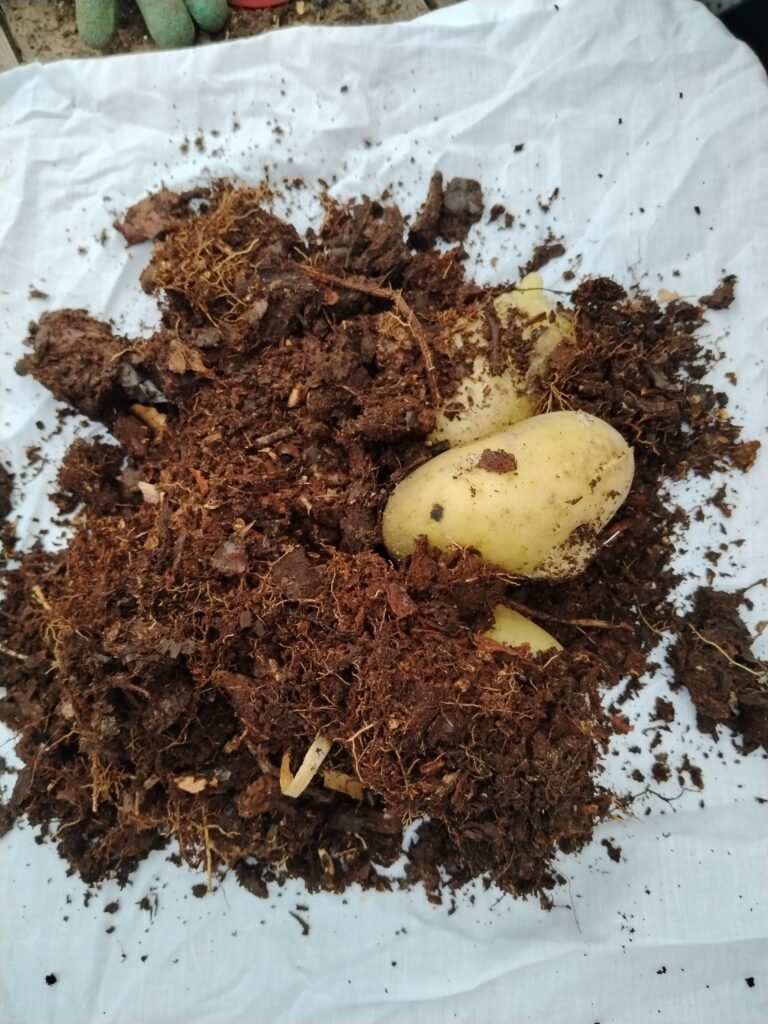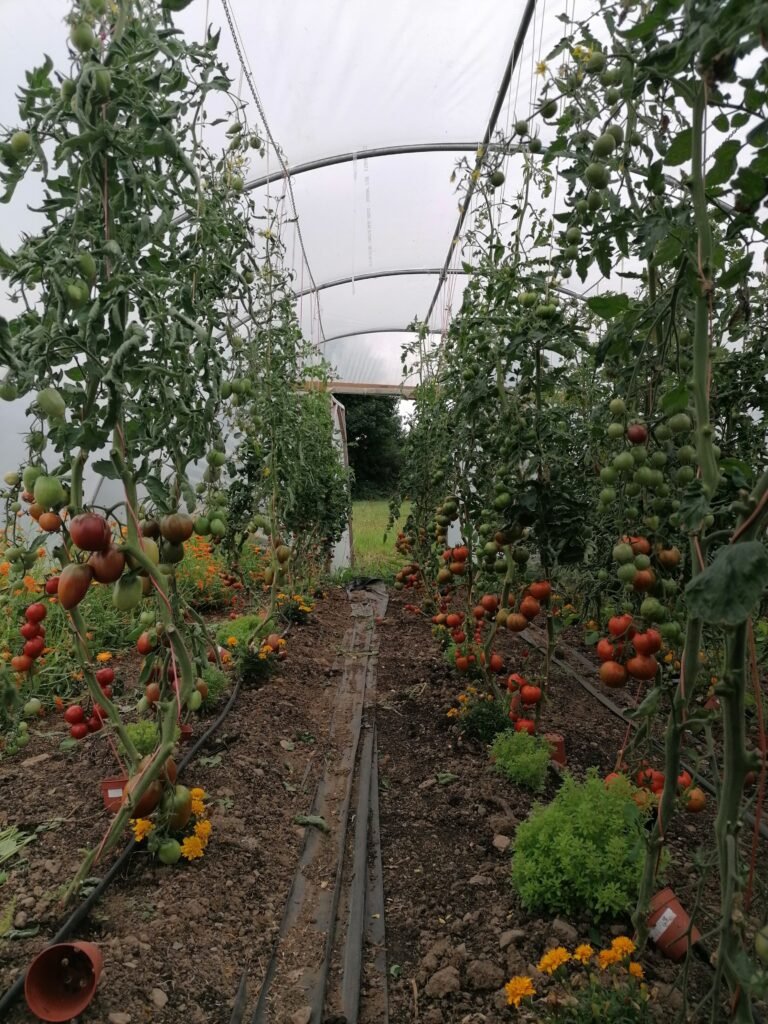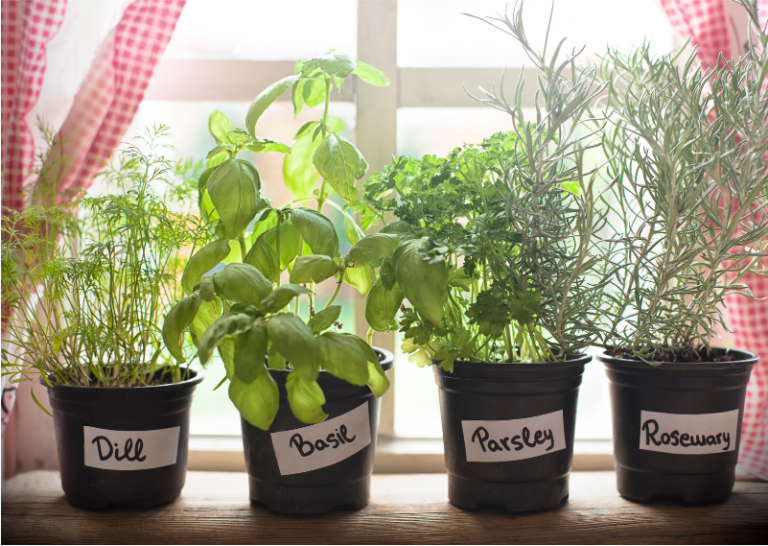


If you’ve ever dreamed of harvesting your own big, buttery broad beans, you’re in the right place. This guide will show you how to grow broad beans without pesticides, so you can keep your garden — and your plate — as pure as nature intended. No harsh sprays, no nasty chemicals. Just you, the soil, and a little patience.
Broad beans are one of the easiest crops to grow, even if you’ve never planted a thing before. They’re tough, kind, and full of protein. Plus, they’re one of the first veggies you can plant in the year, which makes them a little beacon of hope in the still-chilly spring garden.
And guess what? You don’t need fancy tools or a big space. A sunny patch, a few seeds, and a gentle touch are more than enough. Whether you’re planting in raised beds, straight into the soil, or even in big pots on a balcony, broad beans will reward your care with sweet, tender pods.
Along the way, I’ll show you simple ways to keep your plants healthy without any chemicals. We’ll talk about the best soil, the friendliest bugs, and how to keep blackfly away using natural tricks.
So roll up your sleeves, tuck a packet of seeds in your pocket, and let’s turn your garden into a little patch of magic — the kind that feeds both body and soul.
Let’s begin.
Why Choose Pesticide-Free Broad Beans?
Growing broad beans without pesticides is one of the kindest things you can do — for yourself, for the earth, and for everything that calls your garden home. First, let’s talk about your health. When you skip the sprays, you skip the chemicals too. That means you get clean, safe food straight from your own soil. Broad beans are packed with protein, fibre, and important vitamins like iron and folate, so they’re a wonderful boost for your body.
But it’s not just about what’s on your plate. Growing beans the natural way helps the environment too. Pesticides can hurt bees, butterflies, and all the little helpers we rely on to keep our gardens buzzing. When we leave out the harsh stuff, we make space for pollinators and other good bugs to thrive.
And here’s something amazing — broad beans don’t just grow in soil, they help improve it! Like all legumes, their roots work with special bacteria to pull nitrogen from the air and tuck it into the ground, making the earth richer and more fertile for the next crop. That’s a gift that keeps on giving.
Best of all, homegrown beans just taste better. They’re fresher, creamier, and full of flavor. Picked right from your garden, they go from pod to plate in minutes — and that’s something no shop can match.
So if you’re looking for a beautiful, healthy, earth-friendly crop, broad beans are a brilliant place to start.
Planning Your Organic Broad Bean Patch
Timing is everything in the garden, and broad beans are no different. You can plant them in autumn or early spring, depending on where you live. If your winters are mild, sowing in autumn (around October or November) gives you an early harvest and stronger plants. But if your winters are cold and wet, it’s better to wait until spring — around February to April. Either way, broad beans love cool weather, so don’t wait for summer.
Choosing the Right Location: Sun, Soil, and Spacing
Broad beans are easy-going, but they do have a few preferences. They love the sun, so pick the sunniest patch you’ve got. They grow best in well-drained soil that’s rich in compost or old manure. And don’t forget about space — give each plant a little room to breathe. About 20 cm between plants and 40–50 cm between rows helps keep the air moving and stops diseases from settling in.
Ideal Broad Bean Varieties for Organic Growing
Some varieties just shine when grown the natural way. Here are five great choices for your organic patch:
- Aquadulce Claudia – A favourite for autumn sowing. Hardy and dependable.
- The Sutton – A compact plant, perfect for small spaces or windy spots.
- Crimson Flowered – Beautiful red flowers and great for pollinators.
- Bunyard’s Exhibition – Tall, traditional, and generous with pods.
- Stereo – A tasty variety with smaller, sweeter beans — great for kids.
Crop Rotation and Companion Planting to Reduce Pests Naturally
Here’s a smart garden tip: don’t grow beans in the same spot every year. Rotate them with other crops like leafy greens or root veg to keep the soil happy and pests confused. And why not invite some friendly neighbours? Marigolds, nasturtiums, and chamomile are great companions. They help distract pests and bring in helpful insects like ladybirds and hoverflies.
With just a little planning, your broad bean patch will be bursting with life — and flavor — in no time.
Preparing the Soil Without Chemicals
Before you plant your broad beans, it’s a great idea to feed the soil. Think of compost like a healthy breakfast for your garden. Adding well-rotted compost, leaf mold, or even worm castings helps the soil hold onto water and gives your beans the nutrients they need to grow strong. Mix a good layer into the top few inches of soil — your beans will thank you with lush leaves and full pods!
Natural Ways to Balance Soil pH and Structure
Healthy soil isn’t just about food — it’s also about balance. Broad beans like soil that’s a bit on the alkaline side (pH 6.5 to 7.5). If your soil is too acidic, a sprinkle of wood ash or garden lime can gently nudge the pH up. And if your soil feels heavy and sticky, mixing in some sand or straw can help break it up. Light, crumbly soil is easier for roots to grow through — and makes watering a breeze.
Benefits of Inoculating Seeds with Rhizobium Bacteria
Here’s a secret weapon for happy beans: Rhizobium bacteria. It might sound fancy, but it’s just a natural helper that attaches to bean roots and helps them collect nitrogen from the air — no fertilizer needed! You can buy a little packet of inoculant, dust your seeds with it before planting, and watch your plants thrive. It’s a small step that makes a big difference, especially in tired or poor soil.
Cover Cropping and Green Manure for Next-Season Fertility
Want to give your soil a head start for next year? Try cover crops or green manure. These are fast-growing plants (like clover, vetch, or rye) that you sow after harvest. When you cut them down and dig them in, they break down and feed the soil. It’s like making compost right in place. It’s simple, chemical-free, and keeps your garden full of life — even in the off-season.
With just a little care, your soil can become a living, breathing foundation for healthy plants and better harvests — all without a drop of chemicals.
Planting Broad Beans Step by Step
Broad beans are hardy little wonders! You can plant them directly into the ground or start them indoors if the weather’s still too cold. If you’re sowing outside, wait until the soil isn’t frozen and can be worked—usually early spring or late autumn. Simply push each seed about 5 cm (2 inches) deep into the soil. If you’re growing indoors, pop a seed into small pots filled with compost and keep them in a cool, bright place. Once the seedlings are 10–15 cm tall and the frost has passed, they’re ready to move outdoors!
Spacing, Depth, and Row Alignment
Giving your broad beans enough room is key! Space each seed about 20 cm (8 inches) apart, with rows 45 cm (18 inches) apart. This helps air flow between the plants, which keeps mildew and mold at bay. Plant the seeds around 5 cm (2 inches) deep, pointy side down. Keep rows straight, especially if you’re using supports later — it’ll make tying them up much easier down the road.
Mulching to Suppress Weeds and Retain Moisture
Once your broad bean seedlings are up and stretching for the sun, it’s time to mulch! Tuck in a cozy layer of straw, leaf mold, or well-rotted compost around the base of each plant. This helps lock in moisture, keeps pesky weeds at bay, and slowly feeds the soil as it breaks down. For a longer-term solution, you might even explore living mulch options like spinach, lettuce or creeping thyme to boost biodiversity while keeping things lush and low-maintenance. Plus, mulch keeps your beds looking neat and cared for — what’s not to love?
Watering Routines and Natural Feeding Methods
Broad beans don’t like soggy feet, but they do enjoy a regular drink, especially when the pods start forming. Water them deeply once or twice a week, depending on the weather. During dry spells, increase your watering. Instead of chemical feeds, try a gentle nettle or comfrey tea — these are packed with natural nutrients that give your beans a lovely boost.
With a little love and the right setup, your broad bean patch will be bursting with life in no time — and all done without a single chemical!
Natural Pest Control for Broad Beans
Growing broad beans without chemicals means working with nature instead of against it. While pests like blackfly might show up for a snack, there are plenty of gentle ways to keep them away — no sprays or scary stuff needed.
How to Prevent and Manage Blackfly Organically
Blackfly love the soft tips of broad bean plants. But don’t worry! One easy fix is to pinch off the top shoots once your beans start to flower. This not only stops blackfly from gathering but also encourages your plant to put energy into growing pods. Keep an eye on new growth and act early — it’s much easier to stay ahead than play catch-up!
Attracting Beneficial Insects Like Ladybirds and Hoverflies
Ladybirds (and their larvae) love to munch on blackfly! To invite them in, plant flowers like calendula, dill, and yarrow nearby. These blooms offer food and shelter for the good bugs, which happily patrol your patch for pests.
Homemade Pest Deterrents: Garlic Spray, Neem Oil, Soapy Water
If pests persist, make a gentle spray at home! Try a garlic and chilli spray, neem oil (natural and bee-safe), or even a mild soapy water mist. These all help deter bugs without harming the rest of your garden.
Encouraging Birds and Frogs as Garden Allies
Robins, wrens, and even frogs are garden heroes when it comes to eating pests. You can welcome them by adding water sources, planting shrubs, and keeping some ground cover where they can safely hide and hunt.
Best Companion Plants for Broad Beans
These plants help repel pests, improve growth, or attract helpful insects:
- Calendula – Attracts hoverflies and ladybirds to control aphids.
- Chamomile – Helps boost plant health and brings in beneficial bugs.
- Carrots – Use space well and don’t compete with bean roots.
- Marigolds – Their strong scent confuses pests and draws in good insects.
Plants to Avoid Near Broad Beans
Some plants compete for nutrients or attract unwanted bugs:
- Onions – Can stunt bean growth and compete underground.
- Garlic – Another allium that doesn’t play nicely with legumes.
- Fennel – Tends to suppress the growth of nearby plants.
- Globe artichokes – These take up a lot of space and nutrients.
By mixing in helpful plants and staying alert with natural tricks, your broad beans will grow strong and happy — no pesticides needed. Let your garden’s tiny allies do the hard work, and you’ll be harvesting with a smile in no time.
Disease Management Without Fungicides
Sometimes, even in the happiest garden beds, broad beans can run into trouble. Rust, chocolate spot, and powdery mildew are common diseases — but the good news is, you can keep them at bay without using harsh chemicals. Just a few smart habits make a big difference!
Preventing Rust, Chocolate Spot, and Mildew
The first step is prevention. These diseases love damp leaves and tight spaces. That’s why it’s so important to water at the base of the plant — not over the leaves — and try to keep things dry and breezy. If you spot any brown or white patches, remove the affected leaves right away to stop it from spreading. A tidy patch is a healthy patch!
Spacing and Airflow Tips
Broad beans need room to breathe — just like we do! When planting, space them at least 20–25 cm apart, and keep your rows about 45 cm apart. This gives air a chance to flow through, which helps keep leaves dry and disease-free. If your patch gets a bit crowded, snip away any extra growth to let in more light and breeze.
Choosing Disease-Resistant Varieties
Some varieties are naturally tougher than others. Look for ones labelled “resistant to chocolate spot” or “mildew resistant” when picking seeds. It’s a simple step that can save a lot of trouble later on.
Crop Hygiene: When and How to Remove Infected Plants
At the end of the season, clear away any old or sickly plants — don’t compost them! Diseases can hide in plant debris and come back next year. Instead, bag and bin any infected foliage to keep your soil clean and ready for the next crop.
A little care and clever planting go a long way when it comes to keeping your beans healthy. No sprays needed — just your watchful eye, a bit of airflow, and a love for doing things the natural way.
Supporting, Pruning & Harvesting Broad Beans
Broad beans are sturdy little things, but with a bit of support and care, they’ll reward you with baskets of pods! Let’s walk through the gentle art of staking, pruning, and picking so your plants stay happy — and so do you.
When to Stake Plants and How to Do It Naturally
Once your broad beans start reaching knee-height and dancing in the wind, it’s time to give them a helping hand. Use natural supports like bamboo canes, willow branches, or hazel sticks, and tie the stems loosely with twine. You’re not forcing them — just guiding them, like a kind gardener’s hug.
Pinching Out Tips to Reduce Aphid Risk
Aphids (especially blackfly) love fresh, tender bean tops. So when your plants have about 6–8 sets of flowers, gently pinch out the growing tips. It tells the plant to focus on the pods, not more leaves — and helps keep those pesky bugs away. Plus, the pinched tops can go in a stir-fry or salad. Win-win!
How to Tell When Broad Beans Are Ready to Pick
Here’s the trick: press the pods gently with your fingers. If you can feel the beans inside and they’ve filled out a bit, they’re ready. Don’t wait too long — smaller beans are sweeter and softer. The longer they sit, the starchier they become.
Harvesting and Drying Tips for Maximum Yield
Use two hands to harvest — one to hold the plant, one to pick — so you don’t yank the whole stem out. If you’re harvesting for dried beans, leave the pods on the plant until they rattle, then bring them inside to dry completely. Store them in jars for soups, stews, and seeds for next season.
A little love and light touch go a long way. With support, a soft pinch, and some timely harvesting, your broad bean patch will thrive — and your kitchen will thank you too!
What to Do After the Harvest
Once your broad beans have had their moment to shine, don’t rush to pull everything out and start fresh. There’s still plenty of good to come from those plants — even after the last pod has been picked.
Turning Leftover Plants into Green Manure
Don’t toss those stalks just yet! Broad beans are legumes, which means their roots help fix nitrogen in the soil. After harvesting, simply chop the plants at soil level and dig them in. This green manure breaks down and feeds your soil, readying it for whatever comes next.
Saving Seeds for Next Season
If you had a favourite plant — strong, healthy, and full of pods — save a few beans from it. Let the pods dry completely on the plant, then store the seeds in a cool, dry place. You’ll have your own seed supply next year, adapted to your garden’s rhythm.
Using Bean Stalks in Compost or as Mulch
The leftover stalks and leaves still have work to do. Chop them up and toss them into your compost bin, or lay them around other plants as mulch. They’ll slowly break down and give back to the soil, just like a good friend would.
Reflecting and Planning for Future Succession Planting
Now’s the perfect time to take a deep breath and look ahead. Think about what worked well this season. Maybe you want to plant another round of leafy greens or a cover crop. Succession planting keeps your garden producing — and keeps you smiling through every season.
So even after the harvest is done, your broad bean patch keeps giving — in quiet, nourishing ways that set the stage for the next green chapter.
Conclusion: Grow Broad Beans Naturally and Reap the Rewards
And there you have it — everything you need to grow happy, healthy broad beans without a single drop of pesticide. At first, it might feel like a lot, but don’t worry. With a little practice, each task—whether it’s sowing your seeds, staking the stems, or pinching out the tips—soon becomes second nature. Plus, when you’re out in the garden with soil on your hands and bees humming nearby, you’ll truly know you’re doing something right.
Growing broad beans this way isn’t just about food. In fact, it’s about slowing down, tuning into the seasons, and building something that feels good for you, your family, and the land you care for. What’s more, the best part is the reward — delicious, fresh broad beans picked straight from your garden.
If you’re wondering what to do with your harvest, don’t worry—I’ve got you covered. One of our favourite ways to enjoy a bowlful of broad beans is a creamy, dreamy Broad Bean Hummus. It’s simple, fresh, and packed with goodness. Whether you spread it on toast, tuck it into a lunchbox, or serve it beside roast vegetables, it’s always a winner.
So, whether you’re planting your first seed or harvesting your hundredth pod, know that every little step brings you closer to a garden that gives more than it takes. And truly, if broad beans can do all that with no chemicals in sight, just imagine what else you could grow.
Now go on — get those hands dirty and enjoy the magic of growing your own.






